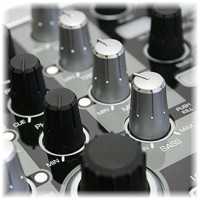


Tips on Using EQ and Cutting Bad Frequencies
Equalization is the art of adjusting the volumes of certain frequencies of a track in a way which leads to more pleasing tonal qualities. Most Daw software comes with an EQ on each channel. There are also EQ plugins available; some free, some not. If your tracks have been recorded in a good sounding room and with proper mic techniques, EQ may be uneccessary. When you do need to use equalization, there's only one way to get it right; trust your ears. We often hear 'How do I add more thump to the kick?'. The answer is often 'EQ'. This can lead to 'I tried that, but now everything is muddy. What frequencies should I cut to get rid of the mud?. The answer is 'It depends on which frequencies are causing the mud'. The point is; each track is different (based on how it was recorded), and no one can tell you what frequencies to adjust without hearing the track. It's like asking 'How do I get to Nashville?'. The answer depends on from where you start. You gotta train, and then learn to trust, your ears. So, how do I train my ears for EQ work? Here are a few suggestions to get you started and some great reference material for further study:
Reference Materials:
Home ~ Getting Started ~ Recording ~ Mixing ~ Mastering ~ Promotion ~ Troubleshooting ~ Contact Us  If you have a question about Audio, please Visit Our Forum: Audiominds.com Forum. Copyright © 2003 www.AudioMinds.com All Rights Reserved. |